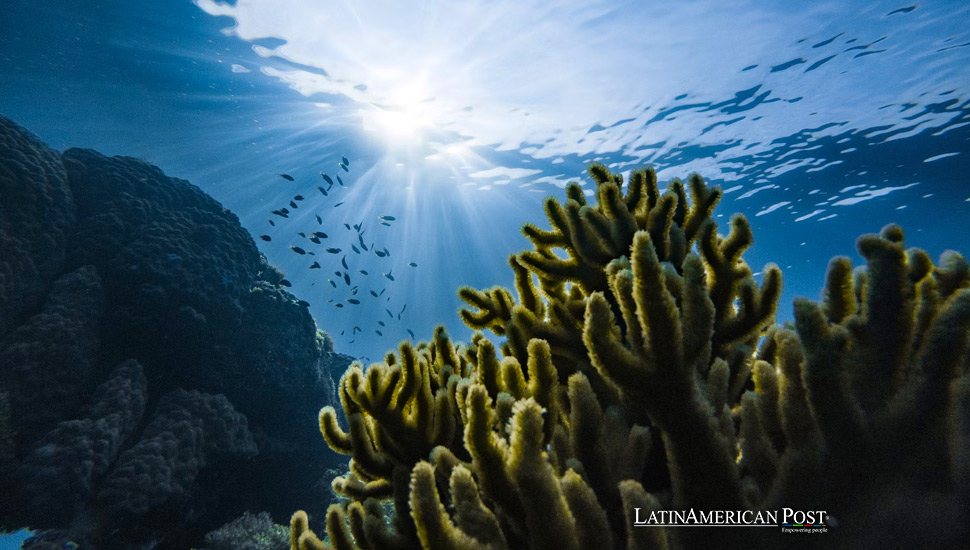Dissecting El Niño’s Impact on Mexico’s Marine Life and Beyond

Experts have noted the warm water increase at the Gulf of California’s entrance, decreased phytoplankton, nutrients, and rising salinity in Mexican waters, attributing these changes to the current El Niño Southern Oscillation (ENSO) phenomenon, highlighting a regional environmental challenge.
Unveiling Mexico’s Marine Environmental Shift
Amid the vast and vibrant tapestry of Latin American ecosystems, a subtle yet profound shift is occurring in the marine environments of Mexico, as observed by experts from the Universidad Nacional Autónoma de México (UNAM). The increase in warm water at the Gulf of California’s entrance, coupled with a notable reduction in phytoplankton, nutrients, and an uptick in salinity, paints a concerning picture of the immediate impacts of the El Niño Southern Oscillation (ENSO) phenomenon currently unfolding in Mexico. This environmental shift, meticulously documented by the UNAM’s multidisciplinary mission aboard the oceanographic vessel ‘El Puma,’ offers crucial insights into the broader implications of climate patterns on the region’s biodiversity and fisheries.
El Niño, characterized by a temporary increase in the Pacific Ocean’s surface temperatures, wields considerable influence over global weather patterns, including those in Latin America. The recent observations conducted by UNAM’s team highlight how these changes directly impact Mexico’s fisheries, potentially affecting the tuna industry, other marine organisms, and coral reefs. Researchers María Adela Monreal Gómez and Martín Merino Ibarra from the Institute of Marine Sciences and Limnology, along with Ligia Pérez Cruz and Miguel Ángel Díaz Flores from the Institute of Geophysics, concur on the detrimental effects of diminished nutrients in the water and rising temperatures on marine life.
UNAM’s Multidisciplinary Mission aboard ‘El Puma’
This pioneering research venture represents UNAM’s first attempt to integrate geophysics, marine sciences, and physicochemistry specialists to examine the onsite effects of El Niño in Mexican waters. The team scrutinized various factors, including temperature, salinity, dissolved oxygen, nutrients, and chlorophyll, and collected materials for metagenomics to build a comprehensive understanding of El Niño’s impact.
While satellite revisions have made the ocean’s temperature rise readily apparent, Monreal Gómez emphasizes the importance of examining differences along the water column, noting changes at depths up to 500 meters. Remarkably, at 50 meters depth, they discovered anomalies up to five degrees Celsius higher than expected. Such findings underscore the necessity of UNAM’s efforts to explore the more profound, less visible effects of this warm phase of ocean-atmosphere interaction.
The onset of El Niño’s influence was first recorded in June 2023, marking one of the most significant increases in sea surface temperature to date. This prompted a focused examination of the Pacific Mexican states of Jalisco, Sinaloa, Colima and the entrance of the Gulf of California (Baja California Sur). Early data from the campaign, conducted in late January, revealed a significant surface temperature rise in the Gulf’s southern part, where warm summer waters persist.
The persistence of El Niño’s effects beyond December, traditionally its peak month, indicates an ongoing impact. The phenomenon, resulting from weakened trade winds that change ocean currents and favor rainfall in the Americas, significantly diminishes the nutrients crucial for phytoplankton development. Cruz detailed the study’s methodology, which included collecting data and samples along Jalisco, Sinaloa, and offshore, followed by sampling hydrographic stations in the Gulf of California, aiming to assess the situation of vital fisheries in one of the world’s most productive marine environments.
Initial observations suggest a decline in planktonic communities, with preliminary physical data indicating an increased intrusion of tropical waters into the Gulf of California. The final results of this extensive campaign are anticipated by the end of 2024, promising to shed light on the complex dynamics at play.
UNAM’s Contribution to Latin American Environmental Understanding
This detailed examination of El Niño’s effects on Mexico’s marine environment is a testament to the academic rigor and interdisciplinary collaboration. It highlights a pressing environmental challenge that resonates across Latin America. Similar to how El Niño disrupts marine life in Mexico, its broader impact on the region underscores the interconnectedness of ecosystems and the need for a unified approach to addressing climate-induced changes. From altered fishing yields affecting local economies to the potential for increased extreme weather events, El Niño’s footprint on Latin America calls for increased awareness, preparedness, and action among the region’s countries.
Also read: Mexico Opens New Museum at Chichén Itzá, Showcasing Maya Civilization
As Latin America grapples with the multifaceted challenges posed by climate variability and change, the insights garnered from UNAM’s pioneering study in Mexican waters serve as a crucial piece of the puzzle. Understanding the intricate effects of phenomena like El Niño on marine biodiversity and regional fisheries can guide mitigation and adaptation strategies, ensuring the resilience of both marine ecosystems and the communities that depend on them. This endeavor highlights the scientific community’s role in addressing environmental challenges. It emphasizes the importance of collective action and cooperation among Latin American nations in the face of global climate dynamics.




